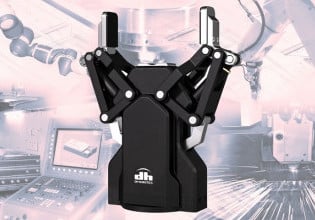Desmasa Combined AMRs and Cobots to Create Mobile Collaborative Robots
Desmasa unveiled a new mobile collaborative robot (MCR) that combines the mobility and agility of a vehicle with the industrial utility of a collaborative robot.
The MCR is the base model, and the MCR+ autonomously navigates the plant. The MCR line can perform numerous industrial tasks, from palleting to machine tending or quality control.
Video used courtesy of Desmasa
The MCR series is an embodiment of Desmasa’s mission to supply manufacturers with the tools they need to improve their processes. Desmasa has serviced the medical, metallurgical, food, automotive, and tire industries across Europe and North America.
The MCR and MCR+
The MCR line’s key features include safety, compact size, and ease of deployment in an industrial environment. Lined with motion sensors, they are relatively safe to deploy in spaces occupied by employees, robots, and other equipment. Their physical footprint is 60% smaller than many other such collaborative robots, meaning they can be used for smaller manufacturing facilities or job shops that are often reconfigured.

Desmasa MCR. Screenshot used courtesy of Desmasa
The two MCR lines, the MCR and the MCR+, are deployed in a slightly different manner. The MCRs are loaded and transported on a pallet jack to their work location. When the task is complete, they can be picked up by a pallet jack and moved to their next location. However, the MCR+, with its autonomous capabilities, drives to the predestined location.
The MCR series robots can handle 10 kg (22 lbs) and reach as far away as either 1249 or 1418 mm (49 or 55 inches), depending on the submodel. Their final design represents a collaboration between Desmasa for the overall design and software, FANUC for the robotic arms, and Photoneo for the machine vision components.
Cobots for Industrial Tasks
Desmasa envisions these cobots as being used for palleting, inspection tasks, machine tending and maintenance, loading and unloading materials, and various other manufacturing tasks. Because they can be implemented near workers, they can be valuable partners for delicate or dangerous tasks associated with machine tending.
For example, they could remove small parts from a press with extreme accuracy and timing, and place them in a bin for human inspection. The press operator would never have their hand near the moving press parts, thus reducing the chances of serious injury.

Desmasa MCR+. Screenshot used courtesy of Desmasa
MCRs could also improve process safety by saving employees from repetitive motions and associated injuries during loading, unloading, and palleting operations.
One of its key advantages is the ability to reposition (or be repositioned) quickly. For fast-paced, ever-changing manufacturing environments, the ability to deploy a system, then pack it up and redeploy it for a different process is a significant advantage. It allows a startup or smaller manufacturing facility to remain agile and build capacity in new products ahead of larger facilities that require extensive retooling.
The MCR and MCR+ robots can act as safe, efficient partners in the manufacturing environment. They can save time and labor, as well as keep the facility agile enough to pick up the newest task without the need for massive reconfiguration. They have a promising future in the small- to medium-scale manufacturing facilities in virtually all industries.






